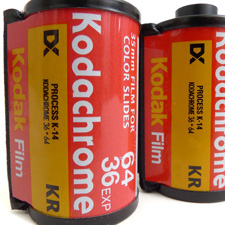Catatonic
Nine Lives
How many of you still shot film?

It’s the end of the line for Kodachrome, the first commercially successful color film, created by Kodak in 1935. The iconic film will no longer be processed, as Thursday marked the last time Dwayne’s Photo — a lab in Parsons, Kansas — was willing to accept Kodachrome rolls that needed developing.
Steve McCurry was given the last roll of Kodachrome produced by Kodak and he took that roll to Dwayne's Photo on Thursday to have it developed.
No digital camera has ever been able to produce an image like this without post shot processing on a computer:

I never "warmed" up to digital photography until I discovered the PC-based tools that allow a photographer to get the color and detail of film.
To see some of the other images Steve captured on the last roll of Kodachrome, go to his blog site.
http://stevemccurry.wordpress.com/2010/12/30/the-end-of-an-era-1935-to-2010/
In case you have never heard of Steve McCurry, he took this picture (and many thousands more for National geographic).



It’s the end of the line for Kodachrome, the first commercially successful color film, created by Kodak in 1935. The iconic film will no longer be processed, as Thursday marked the last time Dwayne’s Photo — a lab in Parsons, Kansas — was willing to accept Kodachrome rolls that needed developing.
Steve McCurry was given the last roll of Kodachrome produced by Kodak and he took that roll to Dwayne's Photo on Thursday to have it developed.
No digital camera has ever been able to produce an image like this without post shot processing on a computer:

I never "warmed" up to digital photography until I discovered the PC-based tools that allow a photographer to get the color and detail of film.
To see some of the other images Steve captured on the last roll of Kodachrome, go to his blog site.
http://stevemccurry.wordpress.com/2010/12/30/the-end-of-an-era-1935-to-2010/
In case you have never heard of Steve McCurry, he took this picture (and many thousands more for National geographic).




